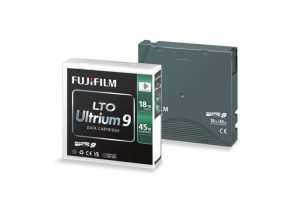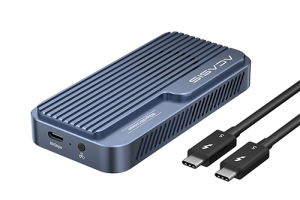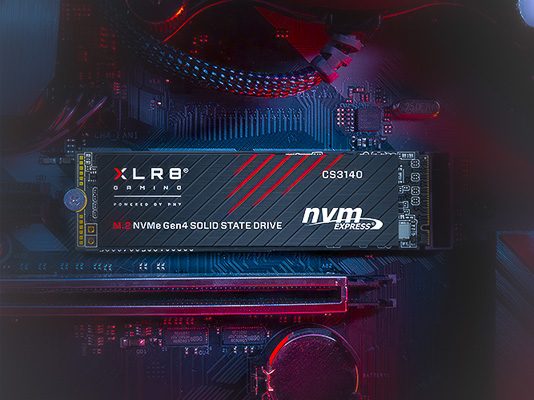As a photographer, backing up your work can be just as important as capturing it. Regardless of how big the client or event is, losing your files is devastating and something all photographers hope to never experience.
Traditional backups like external hard drives and cloud storage can work well, but for long-term archival, one of the most reliable options is LTO (Linear Tape-Open) storage.
In this guide, we’ll break down what LTO (Linear Tape-Open) storage is, how it works, and why you should consider using it as a backup storage solution.
What is LTO Storage?

LTO (Linear Tape-Open) is a data storage device that uses magnetic tape for data archiving and data transfers.
Many individuals use this storage solution for its durability and long lifespan. Unlike common hard drives, LTO tapes are built to store large amounts of data without the potential risk of corruption and overwritten files.
LTO devices can store terabytes at a time and last up to 30 years+ if kept under the right conditions. For photographers who need to archive raw files or their completed projects, this is a great option.
How LTO Works?

Setting up LTO storage does take a little more than typical plug-and-play options. Here are the basic steps:
Get the Required Hardware: You’ll need an internal or external LTO tape drive that is compatible with USB or SAS. LTO drives are not cheap, but they are normally a one-time investment that pays off long-term. If you don’t plan on using this consistently, you can rent one for a lot less.
Choose Your Tapes: Purchase LTO tape cartridges from a reputable brand. (IBM, FUJIFILM, HP). Each tape has specific storage capacities and has different compatibilities. Before purchasing, always look at reviews to make sure you are getting the best bang for your buck.
Install Backup Software: This software is needed to write the files onto the tapes. There are free and paid options available, and some even offer cataloging features.
Organize and Regularly Back Up: Keeping your files organized and backed up will make your workflow process smooth. You can do this by:
- Curating and Compressing: Exporting your high-resolution files, keep them organized by project or year, or whatever makes it easy for you to identify them.
- Write to Tape: Use LTFS to mount tape like a drive and drag and drop files easily.
- Creating Catalogs: Keep an index that is easily searchable. (CSV, Lightroom catalog, software-based).
- Store Properly: Keep your tapes in a cool environment (Around 60-75 degrees Fahrenheit) with low humidity. Make sure they’re in a dust-free area and stored vertically in archival boxes. Test them every 3-5 years and upgrade the drive format every 10 years to ensure compatibility
Why Photographers Should Use LTO
It’s very common for photographers to deal with large files. High-resolution images or RAW files start to take up a lot of space. LTO is a cost-effective way to back up all these files safely. You don’t have to rely on the internet or cloud subscriptions to access your files.
Some benefits of LTO include:
- Reliability: Unlike other storage devices, these tapes are resistant to ransomware and electrical surges.
- Longevity: They can last anywhere from 20 to 30 plus years if kept in the proper conditions.
- Accessibility: Only you can access your files when needed. You don’t need to rely on the internet to access your files.
- Cost-effective: Compared to SSDs, this is a more cost-effective option per terabyte for long-term storage.
- Capacity: LTO can hold up to 18TB uncompressed or 45TB compressed per cartridge.
Imagine you’re a wedding photographer who delivers over 40 galleries a year. That adds up to thousands of high-resolution images which means a lot of storage is needed. In cases like these, some photographers will use a dual backup process. What does that mean?
First, you back up your files to an external drive, and then to a permanent archive on LTO. This way, once you finish your work, you can clear out your external drive to reuse on new clients while keeping all your finished work on the LTO tapes.
If your client comes back asking for photos or you need to use some to update your portfolio, you can easily retrieve them from the archive.
LTO Storage Pricing
Tape Media Costs
LTO tape cartridges are relatively affordable, especially when considering their high storage capacities. For instance, an LTO-8 tape offers 12TB native capacity and can be priced around €73–€75. This translates to approximately €6.08–€6.25 per TB. Notably, LTO-8 tapes support compression, allowing up to 30TB of data per tape, effectively reducing the cost per TB even further.
Tape Drive Costs
The primary expense in an LTO storage setup is the tape drive. High-quality LTO drives can range from €3,247 to €6,299, depending on the model and features. For example, the HPE StoreEver LTO-8 Ultrium 30750 Tape Drive is priced at €4,053.95, while the HPE Smart Choice SKU E Storage LTO-8 Ultrium Rack Mount package, including multiple tapes, is available for €4,852.95.
Cost Comparison: LTO vs. HDD
When comparing LTO storage to traditional hard drives, LTO offers a compelling cost advantage for large-scale archiving:
LTO-8 Tape: €6.08–€6.25 per TB
28TB HDD: Approximately €330, equating to about €11.79 per TB
Considering a scenario where you need to store 720TB of data:
LTO Setup: 60 tapes (12TB each) at €73 per tape = €4,380
HDD Setup: 25 HDDs (28TB each) at €330 per HDD = €8,250
In this case, the LTO setup is more cost-effective. However, it’s essential to factor in the cost of the tape drive. For instance, adding the cost of an LTO-8 drive at €4,053.95 brings the total to €8,433.95, which is slightly higher than the HDD setup. Nonetheless, the LTO solution offers advantages in data longevity and security.
Additional Considerations
Drive Longevity: LTO drives typically have a lifespan of 5–10 years, depending on usage.
Maintenance Costs: Regular maintenance and occasional replacement of drives can incur additional expenses.
Data Retrieval Speed: LTO offers sequential access, which may result in slower data retrieval times compared to HDDs.
LTO vs External Drives and The Cloud
External hard drives are fast and easy to use but are less durable and are prone to more technical issues. They can fail without warning and are not ideal for long-term archiving.
Meanwhile cloud storage is convenient but has ongoing costs and depends on internet access. LTO fills the gap of both alternative options by being more reliable. It is low maintenance and long-term storage that does not rely on the internet to access important files.
While LTO is perfect for long-term storage, portable solutions like USB drives still have their place. Many photographers use custom USB flash drives as deliverables to their clients, which is something LTO simply can’t do. They’re also a lot more affordable and can be used quickly on the go.
To Summarize
Having your files backed up on an LTO prevents you from losing them but also allows you to easily save your history as a photographer. These devices are a secure and reliable way to protect all your work throughout the years.
Though it has a high start-up cost, it’s an investment that will likely last over 30 years, making every penny well worth it. For professionals who want to keep all of their work protected, the Linear tape-open devices are a must.





